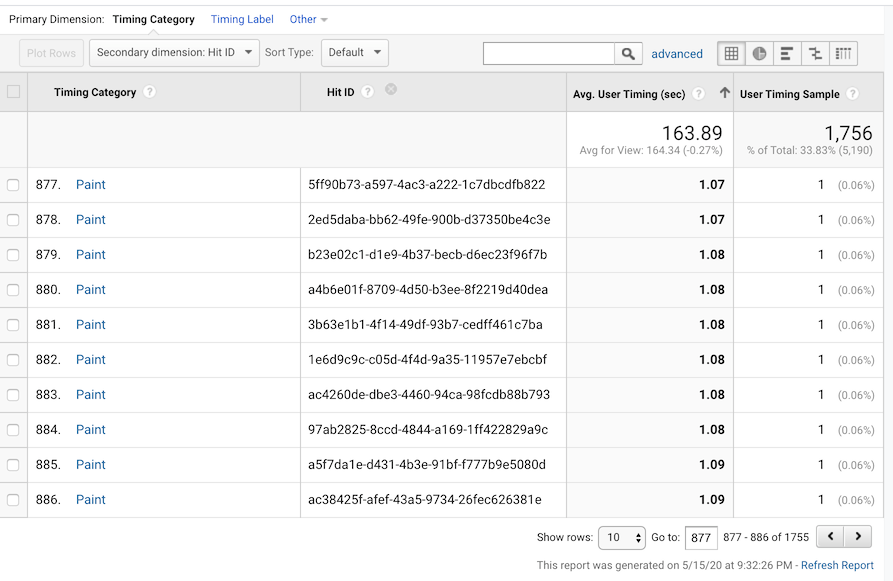Secondary Dimension in Google Analytics: Best Practices and Tips
Secondary Dimension in Google Analytics: Best Practices and Tips
Blog Article
Unlock Deeper Insights With Second Dimension in Google Analytics
With the large area of data offered in Google Analytics, the utilization of secondary dimensions can dramatically enrich your analytical capacities. These added layers of data offer a nuanced perspective that can brighten detailed information within your main metrics. By tactically incorporating secondary dimensions right into your analysis, you can discover valuable understandings that could or else stay undiscovered. The capacity to divide and translate customer habits with higher precision opens a realm of opportunities for enhancing and maximizing methods performance.
Understanding Primary Vs. Additional Measurements
When assessing information in Google Analytics, it is necessary to compare key and secondary measurements to gain deeper insights into individual behavior. Main measurements are the primary classifications through which you can see your information, such as source/medium, touchdown, or gadget web page. These measurements provide the fundamental framework for arranging and comprehending your information. On the other hand, additional dimensions enable you to further study your main dimension data. By including a second measurement, you can layer on additional details to your primary dimension, allowing a more granular analysis. If your key measurement is the source/medium via which individuals arrived on your website, including a second measurement like geographical area can disclose where those users are located geographically. When looking at the main measurement alone, this added layer of information can aid you recognize trends, patterns, or anomalies that might not have been obvious. Leveraging both main and second dimensions in Google Analytics is vital for detailed data evaluation and notified decision-making.
Utilizing Second Dimensions Properly
Successfully using second dimensions in Google Analytics improves the deepness and granularity of information evaluation, offering valuable understandings into customer actions and fads. By including secondary measurements alongside key measurements, marketers and analysts can delve deeper into the specifics of customer communications on their internet sites. Additional dimensions allow users to segment and filter main dimension data better, using an extra comprehensive sight of customer actions, demographics, and interactions. This can be particularly useful when attempting to recognize the influence of particular variables on user interaction, such as the gadgets or internet browsers they are making use of, the resources of their web traffic, or their geographic places.
Furthermore, secondary measurements make it possible for customers to contrast and contrast various data factors within a solitary record, assisting in a much more detailed analysis of individual behavior patterns. By leveraging second measurements properly, businesses can uncover surprise insights, optimize their advertising techniques, and enhance the overall individual experience on their websites.
Checking Out Common Second Dimension Mixes
To even more evaluate individual actions and fads in Google Analytics, it is valuable to check out usual combinations of secondary dimensions. Some common additional measurement combinations that offer valuable insights consist of assessing web traffic resources with user areas to recognize where website site visitors are coming from geographically and just how they located the site. Examining user actions metrics with second dimensions such as demographics or rate of interests can help in targeting particular audience segments extra effectively.
Using Additional Measurement in Custom-made Information
Making use of additional measurements in custom-made reports enables an extra anchor comprehensive analysis of information in Google Analytics, enhancing the deepness of understandings gotten. When producing custom-made reports in Google Analytics, integrating second measurements can provide an extra detailed sight of exactly how various dimensions communicate with each various other. This attribute enables users to delve deeper right into their data and reveal beneficial correlations that might not be immediately apparent.
By applying secondary measurements in custom reports, individuals can gain a better understanding of their web site or app website traffic. For instance, combining the main dimension of "source/medium" with the secondary dimension of "touchdown web page" can disclose which touchdown web pages are performing finest for website traffic coming from certain resources. This understanding can help online marketers optimize their campaigns and improve general conversion rates.

Enhancing Data Visualization With Secondary Measurement
When discovering data in Google Analytics custom-made records, incorporating additional measurements not just gives a more detailed evaluation however additionally boosts the graph of understandings with information visualization. By including an additional dimension to your reports, you can improve the method information is presented, making it much easier to recognize patterns, fads, and correlations within your site's efficiency metrics.
Second measurements can assist you segment your data additionally, permitting a deeper understanding of individual habits and interactions on your site. When trying to separate specific variables that might influence your site's performance., this boosted degree of granularity can be specifically useful.

Verdict
Finally, leveraging secondary measurements in Google Analytics enables an extra thorough evaluation of information, causing much deeper understandings and even more educated decision-making. Secondary Dimension in Google Analytics. By adding extra layers of info to primary information sets, marketers and analysts can discover hidden patterns, patterns, and correlations that offer a granular view of individual actions news and communications. This improved degree of understanding allows optimization of campaigns and tailored techniques for particular audience sections, inevitably boosting efficiency and conversion prices
On the other hand, additional measurements enable you to further dissect your main dimension information. By including a secondary measurement, you can layer on added info to your primary dimension, making it possible for a much more granular analysis. If your primary dimension is the source/medium with which customers arrived on your website, adding a second measurement like geographic area can disclose where those individuals are situated geographically. By including additional dimensions alongside primary dimensions, analysts navigate to this website and marketing professionals can dig deeper into the specifics of user communications on their sites. Additional measurements enable users to segment and filter primary measurement data even more, providing a more thorough sight of individual habits, demographics, and communications.
Report this page